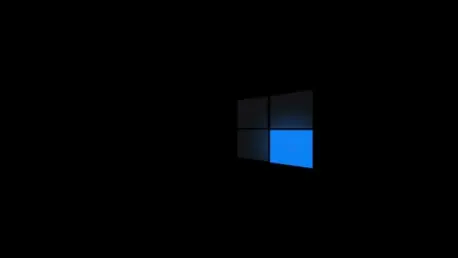As the end of support for Windows 10 approaches in October 2025, a critical recommendation has been issued for users of this widely-used operating system. Cybersecurity firm ESET has strongly advised users to transition either to Windows 11 or an alternative operating system like Linux to mitigate significant security risks. With the cessation of free security updates after October 14, 2025, continuing to use Windows 10 will leave millions of systems vulnerable to new threats, including breaches, malware, and other cyber risks. The urgency of this recommendation stems from expert analysis, notably put forth by Thorsten Urbanski from ESET, who emphasizes the importance of this transition for safeguarding user data and systems.
Current Adoption Rates and Challenges
Adoption Rates of Windows 11 Versus Windows 10
As of late 2024, the number of users transitioning from Windows 10 to Windows 11 has presented mixed results, posing a challenging scenario for Microsoft and end-users. Approximately 32 million computers in Germany are still operating on Windows 10, representing a significant 65% of household devices. In comparison, Windows 11 has been adopted by around 16.5 million devices, which account for 33% of the household computing environment. On a global scale, nearly 63% of Windows users remain on Windows 10, whereas 34% have transitioned to Windows 11. Despite these figures, there is a notable trend among gamers, with about 55% now using the newer operating system compared to 42% who remain on Windows 10.
This discrepancy in adoption rates highlights the challenges faced by users and businesses in migrating to Windows 11. Several factors contribute to this reluctance, ranging from the absence of popular features in Windows 11 to performance issues experienced during the initial phases of the upgrade. One significant barrier is the hardware requirement for the Trusted Platform Module (TPM), which has prevented many older devices from transitioning. For gamers, however, the enhanced performance and compatibility with newer titles have driven a higher adoption rate of Windows 11. As support for Windows 10 nears its end, understanding these adoption dynamics is crucial for addressing the broader security implications.
Security Implications and Solutions
Risks of Remaining on Windows 10
The urgency to upgrade from Windows 10 to a more secure operating system is underscored by the potential security risks that users will face post-October 2025. Without continuous security updates, devices running Windows 10 will become increasingly susceptible to new vulnerabilities exploited by cybercriminals. Thorsten Urbanski from ESET highlights the inevitability of hackers exploiting these vulnerabilities once the support ceases, thereby amplifying the risk of breaches and malware attacks on a massive scale. The cybersecurity landscape is constantly evolving, and the absence of updates will leave users defenseless against sophisticated threats.
One of the major challenges in this transition is reassuring users about the necessity of the upgrade. Despite the substantial security risks, many users remain hesitant due to interoperability concerns, performance issues, and unfamiliarity with new features. For businesses, the financial implications of upgrading multiple systems or purchasing extended security updates (ESU) pose additional hurdles. While Microsoft offers ESU at a steep $427 over three years for businesses and $30 per device for consumers for one year, these costs are often seen as prohibitive. Therefore, educating users and organizations about the long-term benefits and necessity of the upgrade is paramount.
Alternatives for Users Unable to Upgrade
For users unable to upgrade to Windows 11, exploring alternative operating systems like Linux becomes a viable option to maintain security standards. Linux distributions offer enhanced security features and flexibility, catering to diverse user needs and system capabilities. For older devices that do not meet Windows 11’s TPM requirement, Linux provides a robust solution that can extend the usability of existing hardware while ensuring security. Adopting Linux may involve a learning curve, but the long-term benefits of security, performance, and open-source support present a compelling case for transition.
Moreover, tech communities and forums actively support users transitioning to Linux, offering resources, tutorials, and hands-on assistance. Engaging with these communities can alleviate the apprehension users may have about migrating to a new operating system. Additionally, migrating to Linux can address concerns about vendor lock-in, providing users with more control over their systems and data. As the support end date for Windows 10 draws near, it is crucial for users to assess their options, prioritize security, and take proactive steps to safeguard their digital environments.
The Path Forward
Urgency of Early Transition
With the October 2025 deadline rapidly approaching, Windows 10 users must consider upgrading sooner rather than later to avoid significant security risks and potential data loss. Procrastination could lead to severe vulnerabilities, and addressing the upgrade promptly will ensure continued protection against emerging threats. For businesses, developing a strategic plan for the transition, budget allocation for any necessary hardware or software upgrades, and employee training on the new operating system are essential steps. Meanwhile, individual users should evaluate device compatibility, explore available options, and make informed decisions to ensure digital security.
Microsoft’s stance on the TPM requirement for Windows 11 remains firm due to its pivotal role in enabling advanced security features. While this has led to certain compatibility issues, it underscores the importance of robust security measures in the modern computing landscape. For devices that meet the criteria, transitioning to Windows 11 will provide enhanced protection and access to the latest features and updates. As the cybersecurity threats continue to evolve, a proactive approach to upgrades will be instrumental in maintaining a secure and efficient computing environment.
Long-Term Considerations
As the October 2025 end of support for Windows 10 nears, users of this popular operating system have received an important recommendation. Cybersecurity firm ESET advises users to upgrade to Windows 11 or switch to another operating system, such as Linux, to avoid significant security risks. After October 14, 2025, free security updates for Windows 10 will cease, leaving millions of systems vulnerable to new threats, including breaches, malware, and other cyber risks. The gravity of this recommendation is underlined by Thorsten Urbanski from ESET, who stresses the critical need for users to transition to protect their data and devices effectively. As cyber threats evolve, having updated security measures is crucial. Transitioning to Windows 11 or an alternative will ensure continued protection and mitigate potential risks that could compromise sensitive information. Users must heed this advice to safeguard their systems and maintain robust cybersecurity defenses.









